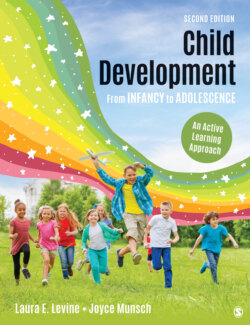Читать книгу Child Development From Infancy to Adolescence - Laura E. Levine - Страница 109
На сайте Литреса книга снята с продажи.
Modern Applications of Operant Conditioning
ОглавлениеAn approach called applied behavior analysis (ABA) uses operant conditioning techniques in schools (Zoder-Martell, Dieringer, & Dufrene, 2017) and with children in special populations to increase adaptive behaviors and decrease maladaptive ones (Myers & Plauche Johnson, 2007). A therapist first observes a child to determine where, when, and how often a problematic behavior is occurring and then identifies the rewards or reinforcements the child is getting from it, setting a goal for the child’s behavior and implementing changes to work toward that goal. This could involve ignoring the problematic behavior or punishing it, if necessary, while rewarding an alternative desired behavior in its place (Neitzel & Bogin, 2008). For example, a child might be annoying peers in a classroom because it gets him sent to detention where he doesn’t have to do his class work. In this case, the way this behavior is being dealt with is unintentionally rewarding the misbehavior by getting the student out of doing his work. The intervention might be that the classroom teacher ignores the misbehavior whenever possible so the behavior isn’t reinforced or there might be negative consequences for it, such as being required to do something else the child doesn’t like to do when he is not doing his class work. At the same time, the child might receive reinforcement such as positive attention or small rewards for appropriate behaviors, such as paying attention to his work. This procedure has been used successfully with autistic children to improve language and sociability (Lablanc, Richardson, & McIntosh, 2005; Simpson et al., 2005), as well as to reduce behavioral problems in children with multiple disabilities (O’Mea, 2013).
Applied behavior analysis (ABA): Application of principles of behaviorism to change problematic behavior of individuals with a range of difficulties.
